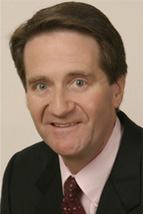Gynecomastia Surgery Performed by Dr. Richard A. Bartlett
Have you ever wondered why the size of your breasts varies when compared to other men of your age and physical attributes? Having a chest size that is smaller is considered normal, but men with large breasts often feel uncomfortable with their physique. Large breasts in men is a very common condition caused by excess tissue. If you are among the estimated 40 to 60 percent of men suffering from excess tissue in either one or both breasts, you are not alone.
The development of breast tissue in males, especially young men around adolescence, is incredibly common. The condition, called gynecomastia, also can occur in older men, men on medications, or men who have lost a significant amount of weight. When the development of breast tissue becomes obvious it can have a devastating effect on self-esteem and will often keep men from ever removing their shirt in public.
What Is Gynecomastia?
Gynecomastia is a condition in which men experience an increase in the amount of breast gland tissue. This increase is usually caused by an imbalance of the hormones testosterone and estrogen. The condition can affect both breasts or just one, resulting in the appearance of male breasts.
“
I am writing to you today to thank you from the bottom of our hearts! The surgery you performed on our son is just beautiful. This procedure was a very difficult decision (on our part) to make. We were hoping all would go well – but with little to no understanding of the outcome – we were nervous about putting our son through this procedure. We thank you for making this process that much easier by your professionalism. Our son’s self esteem ( just one week post op) has already improved tremendously. That in itself is a true gift for him…and we are so pleased with how it all turned out. Once again, thank you for everything.
What Are the Causes of Gynecomastia?
The hormone imbalance that causes this condition can be triggered by several factors, and sometimes the exact cause is not known. Puberty and aging can cause male breast growth, as do the following:
- Thyroid problems (since thyroid glands control sexual development and growth)
- Various diseases, including kidney failure, liver disease, and cancer of the pituitary gland, adrenal gland, or lungs
- Obesity that causes increased production of estrogen
- Certain medications
- Recreational drugs
Children can get this condition for a brief time while the hormones from their mother are still in their bodies.

The Signs and Symptoms of Gynecomastia
Gynecomastia is caused by the enlargement of glandular tissue and not by the fatty tissue in the breast. One of the first signs is a lump or fatty tissue under the nipple. Tenderness or soreness may be present. You may also experience pain or nipple discharge in one or both breasts.
How is Gynecomastia Treated?
Most times, gynecomastia resolves over time without any medicines or treatment. In some cases, patients may need to alter their lifestyle to resolve the condition. Surgery is considered as a treatment if other methods have proven ineffective.
Your breast surgery reduction starts with a consultation with Dr. Richard A. Bartlett, who will determine whether you are a suitable candidate. A physical examination will be conducted and a treatment plan will be made.
Boston cosmetic surgeon Richard A. Bartlett, M.D. is one of New England’s foremost experts in gynecomastia and male breast reduction. He teaches his male breast reduction techniques at the Harvard Medical School and also lectures on the subject of gynecomastia. Dr. Bartlett has helped numerous patients from throughout New England regain their confidence by fixing this benign, but psychologically disturbing problem. He finds that male breast reduction surgery has a high rate of patient satisfaction because results are so dramatic.

Male Breast Reduction Surgery – What to Expect
- About the Surgery – during the procedure glandular tissue is removed, liposuction is occasionally used, and extremely large nipples are reduced in size
- Surgical Setting – treatment of gynecomastia is handled on an outpatient basis
- Anesthesia – general anesthesia is used
- Surgical Incisions – are placed around the nipple area and typically heal without being noticeables
- Post Surgery – a compression vest (similar to spandex) must be worn for 1 week at all times, 24/7. The vest is removed after 1 week to check the incisions. If healing is progressing normally the vest is worn for 1 more week, but patients are allowed to remove the vest briefly to shower. Absolutely no sports or vigorous activity are allowed for 6 weeks following surgery.
- Discomfort is mild and recovery is rapid.
How Much Does a Gynecomastia Cost?
The cost of a Gynecomastia will depend on several factors. The price can be affected by body type, type of technique performed, surgical complications, and even allergies. Find out more by scheduling a consultation.
Schedule Your Consultation
Gynecomastia is a very common condition that many men suffer from. Do not let this condition take control of your life – consult with Dr. Bartlett regarding your male breast reduction options and let him help you live a life free from gynecomastia.



 Recognized as one of “Boston’s Most Trusted Doctors” by Boston magazine, Richard A. Bartlett, M.D. is a board certified plastic surgeon in practice for over 30 years Dr. Bartlett is considered a “doctor’s doctor,” and is a favorite choice of New England medical professionals when referring family and friends for cosmetic and reconstructive plastic surgery in Boston, Massachusetts.
Recognized as one of “Boston’s Most Trusted Doctors” by Boston magazine, Richard A. Bartlett, M.D. is a board certified plastic surgeon in practice for over 30 years Dr. Bartlett is considered a “doctor’s doctor,” and is a favorite choice of New England medical professionals when referring family and friends for cosmetic and reconstructive plastic surgery in Boston, Massachusetts.




